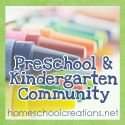
We had a little robin who decided to build a nest right in front of our house and we were able to watch the entire process. The kids were thrilled to discover that she had laid three eggs.
Zachary was the one who alerted us to the fact there were eggs in the nest ~ after he reached up, stuck his hand in the next one morning and felt the eggs.
We had a little discussion about leaving bird’s nests alone. Yes, we did.
That seemed like a great time to avoid those last few pesky letters of the alphabet that are hanging over my head and use the time to learn as much as we could about robins. It would be a shame to waste a perfectly good learning opportunity, don’t you think?
I posted about the robin lapbooks that the girls put together along with some great links, but wanted to do a separate post for Zachary’s lapbook, since it was a little different and more ‘directed’ by him. He was so excited to have school time along with the girls and feels like he is really doing school right now. It’s so funny to watch him.
Zachary’s lapbook only used one file folder ~ I opened it flat and then re-folded it so that there were two smaller flaps on the sides. The above picture shows the front and the back of his lapbook {cover pic is linked below} For the back cover, Zachary drew a picture of some worms and dictated a few sentences to me:
“Robins can see the ground moving. That means worms are going underground. They eat them.”
There are only a few minit books inside: Who’s Who {difference between male and female birds}, bird food, predators, a coloring sheet with a robin’s anatomy, clip art and a drawing Zachary made of a robin’s nest. I didn’t get a very good picture of his completed drawing, but it’s hysterical! The robins all have their heads straight up, mouths open and waiting for food. He was so proud because he did it all by himself and wrote “This iz a robin” along the top.
Here are a some shots inside the lapbook and with the minit books fully opened:
During the week we also worked on memorizing a little poem about “Little Robin Redbreast”. Zachary did great memorizing the first stanza of it:
Up went pussy cat and down went he;
Down came pussy, and away Robin ran;
Says little Robin Redbreast, “Catch me if you can.”
Little Robin Redbreast jumped upon a wall,
Pussy cat jumped after him and almost got a fall;
Little Robin chirped and sang, and what did pussy say?
Pussy cat said, “Meeow!” and Robin jumped away.
Links for the Lapbook:
- Lapbook cover ~ Kidzone coloring sheet
- Homeschool Share ~ link to all minit books
- Predators minit book
- Bird’s diet minit book
- Antamony {who’s who}
- Robin printout from Enchanted Learning ~ you can actually paint this online too.
- Robin toilet paper craft ~ too cute!
- Preschool Express ~ some fun add-on activities to do with preschoolers: feather art, build a nest, snacks and more
Be sure to check out my post about the girl’s robin lapbooks. I’m covering a lot more information about the things that we talked about during the week and will have more resources and links in that post!
About the Preschool Corner:
The guidelines can be found here if you need them.
Share what you’ve been doing in your house this week!



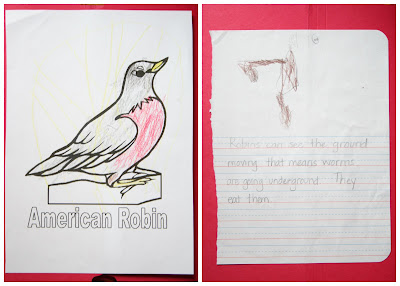



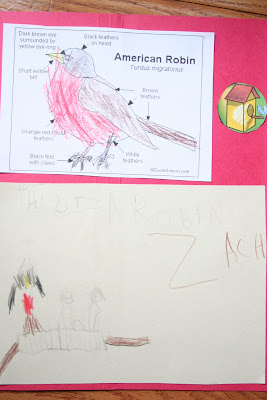

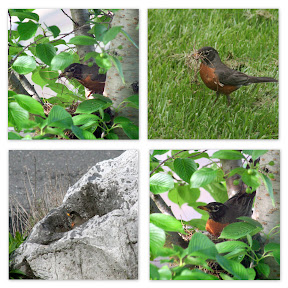
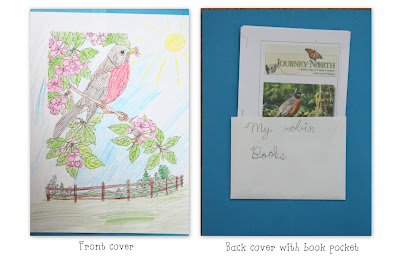
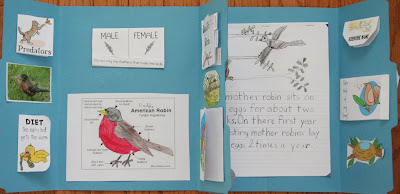
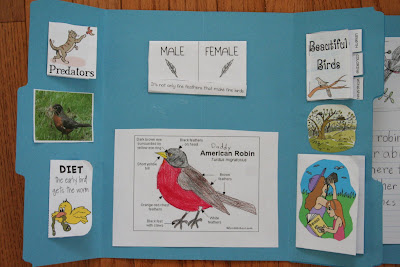


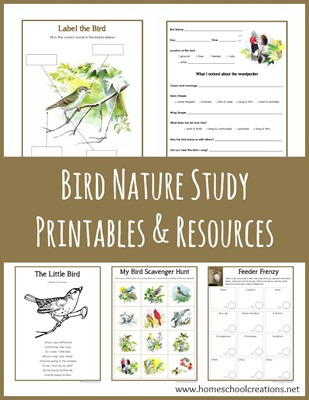

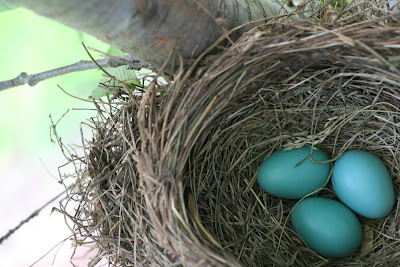


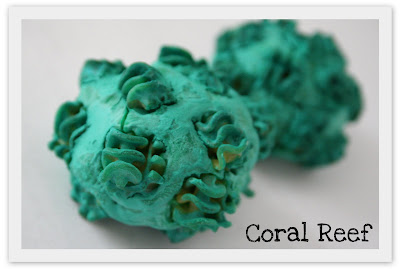


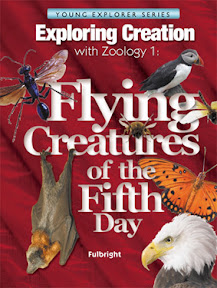



 The dough took a few days to dry, so on Wednesday we were able to paint it together. I outlined a few areas for the girls and they worked together to paint it to make it look more like a scene/cutaway of a volcano. When they were done with the base painting, they let Mommy drip red paint around the ledge of the volcano to make it look like lava was dripping down the sides of the mountain.
The dough took a few days to dry, so on Wednesday we were able to paint it together. I outlined a few areas for the girls and they worked together to paint it to make it look more like a scene/cutaway of a volcano. When they were done with the base painting, they let Mommy drip red paint around the ledge of the volcano to make it look like lava was dripping down the sides of the mountain.





 The printables shared on this site are FREE of charge unless otherwise noted, and you are welcome to download them for your personal and/or classroom use only. However, free or purchased printables are NOT to be reproduced, hosted, sold, shared, or stored on any other website or electronic retrieval system (such as Scribd or Google docs). My printables are copyright protected and I appreciate your help in keeping them that way.
If you download and use some of my printables and then blog about them, please provide a link back to my blog and let me know - I'd love to see how you are using them! Please be sure to link to the blog post or web page and not directly to the file itself. Thank you!
The printables shared on this site are FREE of charge unless otherwise noted, and you are welcome to download them for your personal and/or classroom use only. However, free or purchased printables are NOT to be reproduced, hosted, sold, shared, or stored on any other website or electronic retrieval system (such as Scribd or Google docs). My printables are copyright protected and I appreciate your help in keeping them that way.
If you download and use some of my printables and then blog about them, please provide a link back to my blog and let me know - I'd love to see how you are using them! Please be sure to link to the blog post or web page and not directly to the file itself. Thank you!